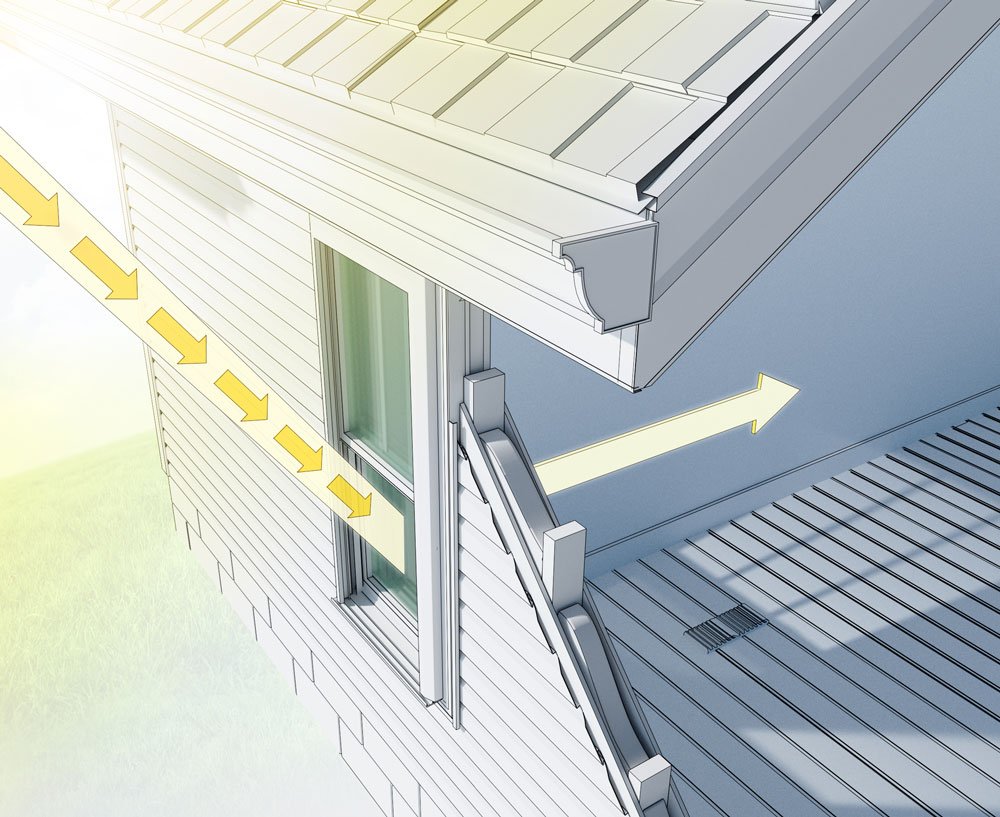What Is Visible Transmittance?
When it comes to choosing the right windows for your Twin Cities home, there's more to consider than just style and price. One important factor that often goes overlooked is visible transmittance (VT). But what exactly is visible transmittance, and why should it matter to you? Let's shed some light on this illuminating topic.
Shedding Light On Visible Transmittance
Visible transmittance, also known as visible light transmittance, is all about how much natural light passes through windows into your home. It's measured on a scale from 0 to 1, where 0 means no light passes through (imagine a solid wall), and 1 means all available light passes through (think of an open window with no glass). Most windows fall somewhere in between. As an example, a window with a VT of 0.5 allows 50% of visible light to enter your home.
The folks at the National Fenestration Rating Council (NFRC) have made it easier for us by creating standardized ratings for all these factors. When you're shopping for windows, look for their label – it'll give you all the information you need to make a smart choice.
Why Visible Transmittance Matters
Now, you might be wondering why this matters. Well, the amount of natural light in your home can make a big difference in your daily life. Here's why paying attention to visible transmittance is important:
Energy Efficiency: Higher VT can reduce the need for artificial lighting, potentially lowering your energy bills.
Comfort: Natural light can improve mood and productivity, making your home a more pleasant place to live.
Aesthetics: The right amount of light can enhance the appearance of your interior spaces.
Plant Health: If you're a plant lover, adequate natural light is crucial for your green friends to thrive.
Balancing Act: VT and Other Window Properties
Now, you might be thinking, "More natural light sounds great!" And you're right – to a point. Natural light can boost your mood, help you sleep better, and even give you a bit of vitamin D. But like anything else, too much of a good thing can cause problems.
Too much sunlight can fade your furniture and carpets, make your air conditioning work overtime in the summer, and create an annoying glare on your TV or computer screen. And let's not forget about those harmful UV rays – they're not just a concern when you're out at the lake!
Luckily, modern windows are pretty clever. Many come with special coatings that filter out UV rays while still letting in plenty of natural light. It's like sunscreen for your house!
This is also why it’s important to find the right balance with all window factors. Looking at things like the U-Factor (which measures how well a window insulates) and the Solar Heat Gain Coefficient (SHGC – how much heat from the sun it lets in) in addition to visible transmittance will help you choose the best windows for your home.
Choosing the Right VT for Your Home
So, how do you pick the right VT? The ideal visible transmittance for windows depends on a few things:
Orientation: First, think about which direction your windows face. South-facing windows might benefit from a lower VT to prevent glare and overheating while north-facing windows could benefit from a higher VT to maximize the light they receive.
Room function: Consider what each room is used for. Bedrooms might benefit from lower VT to keep things dim for better sleep while your kitchen or living areas often do well with higher VT for more natural light.
Climate: And of course, our Minnesota climate plays a big role. Our long, dark winters mean we generally appreciate windows with higher VT to make the most of the daylight we get. But we also need to think about keeping warm in the winter and cool in the summer.
Visible Transmittance and Window Types
Different types of windows and glass can have very different VT ratings. Clear, single-pane glass lets in the most light, with a VT of 0.9 or higher. But it's not great for energy efficiency, so it's not used much these days.
Most modern windows use double-pane glass with special low-E coatings. These typically have VT ratings between 0.4 and 0.7, which strikes a nice balance between letting in light and managing heat. Some windows also use tinted or reflective glass, which can lower the VT even more.
At WindowLab, we offer a range of window options to suit your specific needs and preferences.
Illuminate Your Home with the Right Windows
Choosing the right windows might seem complicated, but it doesn't have to be. Understanding visible transmittance and how it works with other factors like insulation and heat management can help you make the best choice for your home.
Here at WindowLab, we're always happy to help our Twin Cities neighbors find the perfect windows. We can walk you through all the options and help you balance visible transmittance with energy efficiency to keep your home comfortable and bright all year round.
Ready to explore your options? Reach out to us – we'd love to chat about how we can brighten up your home with the right windows!


